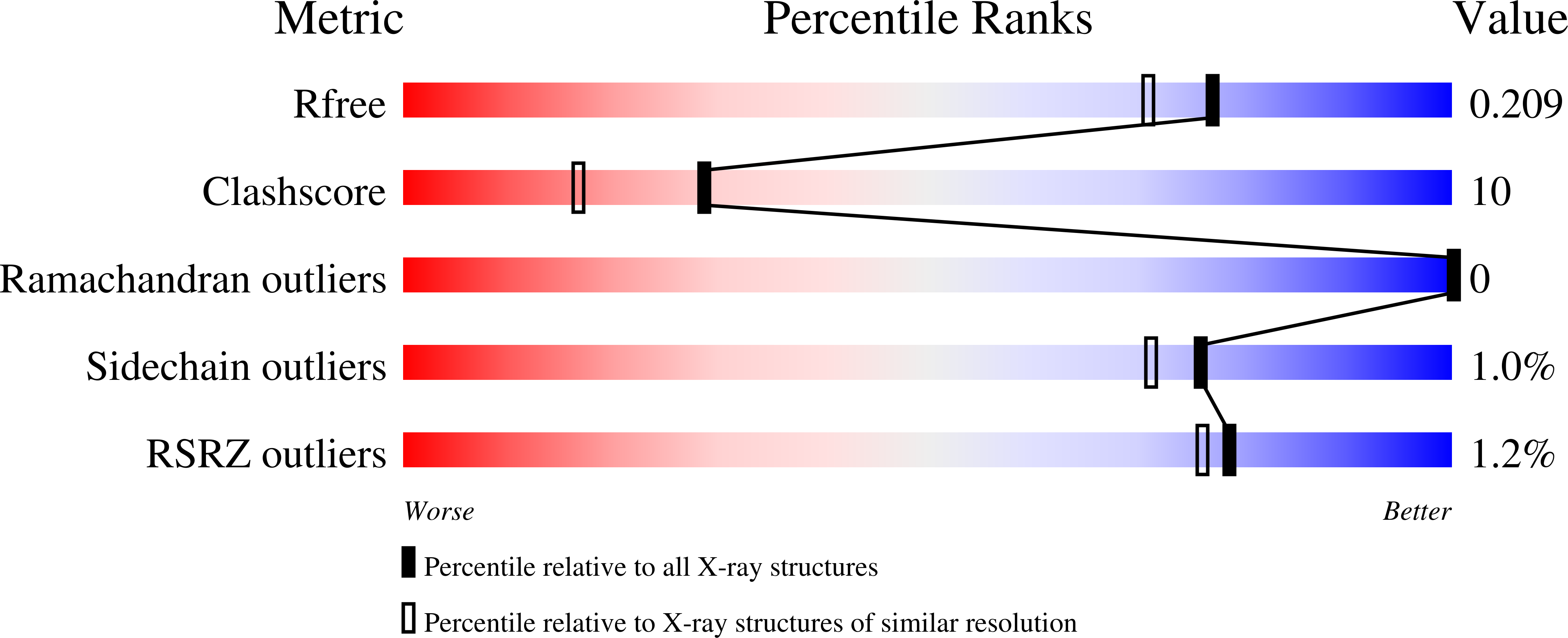Structural basis for the substrate specificity of the feruloyl esterase domain of the cellulosomal xylanase Z from Clostridium thermocellum.
Schubot, F.D., Kataeva, I.A., Blum, D.L., Shah, A.K., Ljungdahl, L.G., Rose, J.P., Wang, B.C.(2001) Biochemistry 40: 12524-12532
- PubMed: 11601976
- DOI: https://doi.org/10.1021/bi011391c
- Primary Citation of Related Structures:
1JJF, 1JT2 - PubMed Abstract:
Feruloyl esterases function in the cleavage of ferulic acid's bonds to arabinoxylan and pectin where the ferulic acid moieties cross-link the layers of polysaccharide chains within hemicellulose. This work presents the crystal structure of FAE_XynZ, the domain of Clostridium thermocellum's cellulosomal xylanase Z that displays feruloyl esterase activity. The structure was obtained via multiple isomorphous replacement with anomalous scattering (MIRAS) using three heavy atom derivatives and refined against X-ray diffraction data of up to 1.75 A resolution. The R-value of the final model was 0.187 (R(free) = 0.21). FAE_XynZ displays an eight-stranded alpha/beta-fold with the characteristic "catalytic triad" at the heart of the active site. To define the substrate specificity determinants of the enzyme, the crystal structures of FAE_XynZ and the inactive FAE_XynZ(S172A) mutant were determined in complexes with the feruloyl-arabinoxylans FAXX and FAX(3), respectively. In the complex crystals, the ferulic acid moieties are clearly recognizable and allowed identification of the hydrophobic binding pocket. The carbohydrate part of both substrates is not visible in either structure. The location of the putative carbohydrate binding-pocket was inferred based on the location and orientation of the adjacent ferulic acid molecule. Five of the six residues lining the pocket were found to be conserved in FAE A from Orpinomyces sp., which further supports the proposed role of these amino acids.
Organizational Affiliation:
Department of Biochemistry & Molecular Biology, The University of Georgia, Athens, Georgia 30602, USA.















